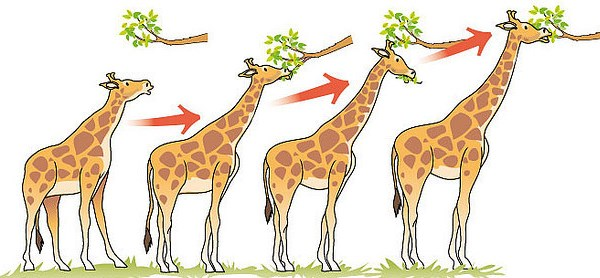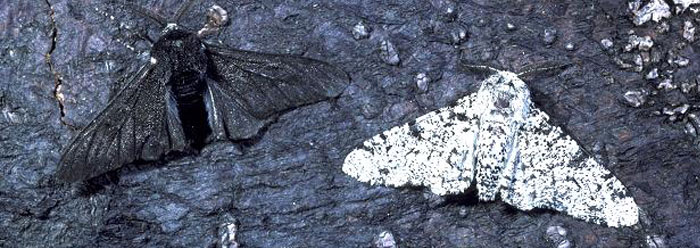Forces of Evolution Study Guide
Forces of Evolution
The Hardy-Weinberg principle states that genetic variance in a population will remain stable across generations. In actual populations, the requirements for such are unlikely to be satisfied. So how does this theorem assist us in comprehending evolution in the actual world?
We may deduce factors that cause allele frequencies to fluctuate from the theorem. We call these factors “forces of evolution”, which include mutation, gene flow, genetic drift, and natural selection. This study guide will go over each of these to help you understand what drives evolution in the natural world!
Mutation
Mutation is responsible for the introduction of new genes to a species. It’s how all new alleles get their start. The mutations that matter for evolution in sexually reproducing organisms occur in gametes, and only these mutations can be handed on to the next generation.
The likelihood of a mutation in a gamete for any particular gene is extremely low. As a result, mutations alone have little impact on allele frequencies. On the other hand, mutations offer the genetic variety that allows other evolutionary processes to work.

Gene Flow
Gene Flow occurs when individuals move into or out of a population. The rate of migration can greatly impact allele frequencies, especially if it’s fast. The population individuals leave and the population they enter may have different allele frequencies, which moves new genes into and out of these groups.
Many American troops had children with Vietnamese women during the Vietnam War. After the war, most of the troops returned to the United States. They did, however, leave copies of their DNA in their children, thus causing gene flow by altering the allele frequencies in the Vietnamese population.
Genetic Drift
Genetic Drift is a random shift in allele frequencies in a small population. Allele frequencies in offspring may differ by chance from allele frequencies in parents when a small number of parents generate a small number of babies. It’s similar to throwing a coin. If you toss a coin a few times, you more likely to get a higher or lower percentage than the expected 50 percent heads and tails.
In a small population, it’s possible that the following generation will have different allele frequencies than projected. Allele frequencies may drift over time in this fashion. Genetic drift can happen under two different circumstances, known as the bottleneck and founder effects.
-
Bottleneck Effect: When a population abruptly shrinks, the bottleneck effect develops. A natural calamity such as a forest fire might produce this. By chance, the survivors’ allele frequencies may differ from those of the original population. These alleles will then be passed on to their progeny, creating a random shift in the gene pool.
-
Founder Effect: When a few individuals start a new population from scratch, the founder effect occurs. By accident, the founders’ allele frequencies may differ from those of their previous population, and will be passed down to their offspring, creating yet another random shift in the gene pool.
Natural Selection
Natural selection is evolution’s last force. This is the evolutionary process that Charles Darwin initially described, and it is the image that most people think of when they think of evolution. Natural Selection occurs when specific traits offer an advantage or disadvantage in survival and reproductive success. Due to this selection pressure, the alleles linked with those characteristics will alter in frequency over time.

It’s also worth noting that a beneficial allele might shift over time due to environmental changes, and that a previously innocuous allele can become either advantageous or detrimental. Naturally, dominant, recessive, and codominant qualities will be chosen in diverse ways. Because natural selection operates on phenotypes rather than alleles, heterozygotes can maintain disadvantageous recessive genes with no detrimental consequences.
The study of the peppered moth (Biston betularia) in England during the Industrial Revolution in the 1800s is a famous example of natural selection. Before the Industrial Revolution, the peppered moth population was largely light in color, with black (pepper-like) speckles on the wings. The “peppered” color was remarkably similar to the bark and lichens that grew on the trees in the area. This helped the moths blend in when resting on a tree, making it more difficult for moth-eating birds to discover and devour them.
Another phenotype appeared in the population from time to time. These moths were heterozygotes with a hyperactive dominant pigment allele, resulting in a solid black coloring. As you might expect, black moths were considerably simpler to locate by birds, putting this genotype at a distinct disadvantage. However, when the Industrial Revolution gained traction, the situation reversed.

Large industries began blowing massive volumes of coal smoke into the air, covering the area with black soot, including lichens and trees. Suddenly, the light-colored moths were easier to identify for birds, while the black moths had the upper hand. The dark pigment allele’s frequency increased considerably, and the black moth phenotype accounted for 98 percent of all moths recorded by 1895.
Air pollution in England began to decline in the 1960s due to new environmental restrictions. As the soot levels fell and the trees returned to their old, lighter hue, it was the ideal time to see how the peppered moth population would react. A progressive increase in the frequency of the lighter-colored phenotype was found in many follow-up investigations. By 2003, the dark phenotype had dropped to less than 10% in most regions of England, with a maximum frequency of 50%.
✅ Conclusion
-
Mutation, gene flow, genetic drift, and natural selection are the four processes that drive evolution.
-
Mutation is responsible for the introduction of all new genes.
-
Allele frequencies in a gene pool are affected by gene flow and genetic drift.
-
Natural Selection occurs when specific traits offer an advantage or disadvantage in survival and reproductive success.
FAQs
1. What are the four forces of evolution?
Mutation, gene flow, genetic drift, and natural selection are the four processes that drive evolution.
2. what is the most important driving force in evolution?
Scientists widely regarded natural selection as the primary driving force behind the diversity of species and their complex characteristics.
3. What is the force that introduces all new genetic variety to a population?
Mutations are responsible for introducing new genes to a population.
4. What four factors conditions must be met for natural selection to occur?
-
Variation: Individual differences in appearance and behavior exist among organisms (within populations). Body size, hair color, facial marks, voice qualities, and the number of kids are all examples of variances. Variability in genes is necessary for
-
Inheritance: Some characteristics are continuously handed down from one generation to another. On the other hand, other characteristics are significantly impacted by environmental factors and have low heritability.
-
Population growth: Most populations produce more children than local resources can support every year, resulting in a resource shortage. Each generation has a high rate of death.
-
Differential reproduction and survival: Individuals with well-suited characteristics to the competition for local resources will produce more children in the future.
We hope you enjoyed studying this lesson and learned something cool about the Forces of Evolution! Join our Discord community to get any questions you may have answered and to engage with other students just like you! Don’t forget to download our App to experience our fun, VR classrooms – we promise, it makes studying much more fun! 😎
]]>